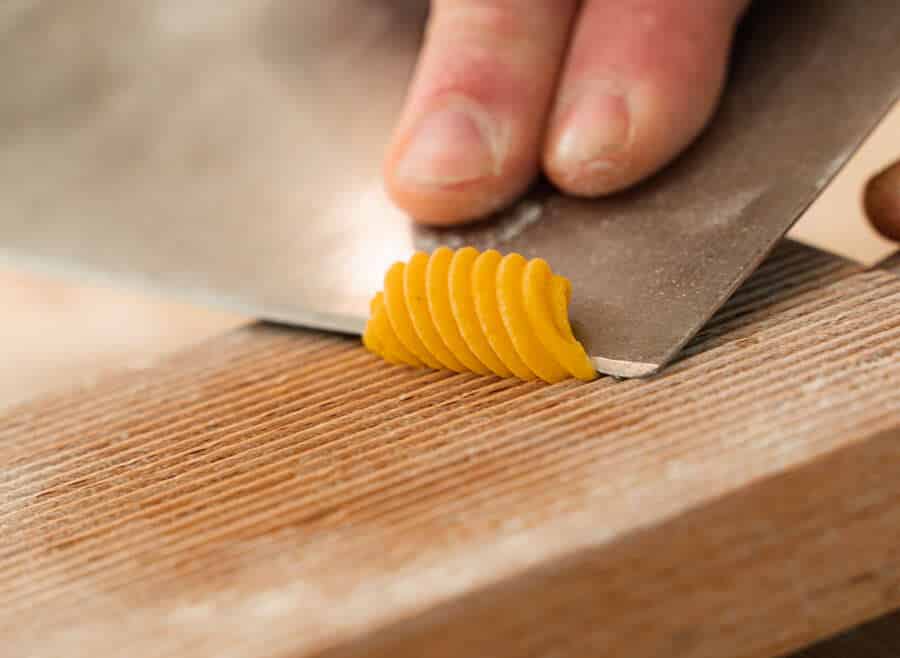It happens that the best things are born as solutions, the result of an unexpected setback. The most picturesque legend, among the many that tell the birth of the Garganelli family, tells the story of the ingenious cook of a famous Cardinal.
His idea was to prepare a dish of traditional cappelletti, but when the time came for the filling he realized that the dough had disappeared, probably stolen by some greedy pet. The cook looked at the squares of pasta and thought of the table anxiously awaiting the first course: she took the tools she had available, rolled up the pasta and invented a new shape destined – from that day forward – to be a great success.
The birth of garganelli pasta
The origin of garganelli dates back to 1700.
In those years in Ferrara the Bentivoglio family reigned over the city.
Power struggles brought them into conflict with the Pope. The Bentivoglios showed off their luxury on every occasion. At the table this was particularly evident. The food was rich, elaborate and filled with pasta.
Legend has it that Cardinal Bentivoglio’s cook was an Arzdora. It was a woman of a certain age with a lot of experience in the kitchen. He was particularly skilled at making all types of homemade pasta. In the collective imagination one imagines an Arzdora with a face always hot from a thousand chores and dirty with flour.
The Arzdora and the garganelli
Like other days, that day too Arzdora was making pasta.
He rolled it out and arranged the small squares on which to place the filling to prepare the cappelletti in broth. A sound coming from the courtyard distracted her. The curious woman moved away from the table to look out the window. A moment of distraction, which a domestic animal – perhaps a cat – did not miss and which it used to wolf down a large part of the meat filling. After the first moments of desperation, Arzdora did not lose heart. He prepared the cappelletti with the remaining filling and decided to roll the excess dough already cut into squares on a thin rod and line them on the comb of a loom.
The garganelli were much appreciated at the Bentivoglio court, because thanks to the grooves the sauce combined perfectly with the pasta.
Being less expensive than stuffed pasta, garganelli were soon also present on the tables of the lower middle classes, who often had flour and eggs if they didn’t often have meat available.
What does garganelli mean
The name garganelli derives from the dialect garganel, that is, the chicken’s trachea, because they recall its shape.
Garganelli are known in Emilia and in particular in the Modena area under the name of Maccheroni or Maccheroncini al comb.
They are excellent with a courgette, saffron and speck sauce, prepared simply with a classic tomato sauce, classic with sausage.
The garganelli with chicken ragout is delicious.
They are also called with the dialectal terms zuflòt or scifulóti, which indicate both the bullfinch (bird) and the whistle, recalled by their shape.
They are obtained by hand by rolling a small lozenge of puff pastry around a stick, then striping it by pressing it on a weaving comb or on a wooden rigagnocchi.
The shape resembles penne as it has oblique ends, but where the two edges of pasta overlap, the garganello has a different consistency.
They are completely similar to the macaroni al comb produced in Emilia, which however are generally large, while the garganello romagnolo can also be small in size if it needs to be cooked in broth.
Even larger, but without the characteristic striping, are the Istrian spindles typical of Slovenian and Croatian Istria.
They are cooked dry, traditionally with pea sauce, with shallots and bacon, ragù alla romagnola or sausage, and with plenty of parmigiano reggiano.
They are often prepared, if small, in meat broth.
How are Romagna garganelli made?
The pastry dough is classic, at most a sprinkling of nutmeg is added: it is the shape and the way of closing them with the comb that made them special. Make the pastry, cut it into 2cm wide squares and then roll them up with the help of a comb, so as to close them on themselves. They are cooked in meat broth and served sprinkled with abundant Parmigiano Reggiano. But they are increasingly appreciated dry, especially with Bolognese sauce or, as in this case, seasoned with a nice, greasy and crunchy sauce, refreshed by shallots.
Who invented Romagna garganelli?
They are typical of Romagna and two cities dispute their paternity: Imola, in the Bologna area, and Lugo di Romagna, in the province of Ravenna. The recipe is identical and unfortunately there are no sources to rely on to understand who should be credited with the paternity of this little jewel of fresh pasta. The only variation that you can find in the various garganelli recipes is the presence of a small grated nutmeg in the dough to make the pastry, otherwise nothing changes.
Which wine should pair with garganelli with shallots and bacon?
We can choose a fresh white wine, with good flavor to remove the fat from the bacon, but which at the same time is rounded to create a certain harmony with the sweetness of the shallot. Be careful of wines that are too alcoholic as they would suffocate the delicate flavor of the shallot. The wine chosen comes from the Hills of Imola to remain “at home” and is the Pignoletto from the Branchini winery, a soft wine, with an elegant nose, full of flowers, a great drink! If you want to combine something more substantial, uncork Prosecco, Champagne or Franciacorta.
If you want to pair it with a cocktail, rely on the sly taste of the Americano, also typical from Florence.

